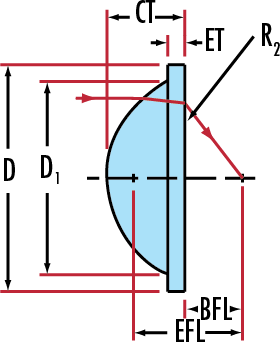
Kondensorlinsen sind gepresste Linsen für Beleuchtungsanwendungen. Kondensorlinsen werden aufgrund ihrer großen Aperturen und kurzen Brennweiten häufig für Emitter-Detektor-Anwendungen, Projektoren oder Kondensor-Beleuchtungen, beispielsweise für die Köhlerschen Beleuchtung, eingesetzt. Die asphärischen Kondensorlinsen sind auf der asphärischen Seite gepresst und auf der Gegenseite geschliffen und poliert. Sie zeichnen sich dadurch durch hervorragende Qualität aus. Die plankonvexen (PCX) Kondensorlinsen sind beidseitig gepresste Linsen mit exzellenten Eigenschaften.


1-800-363-1992
weitere regionale Telefonnummern
ANGEBOTSTOOL
Geben Sie zum Starten die Produktnummer ein.
Copyright 2025 | Edmund Optics, Ltd Unit 1, Opus Avenue, Nether Poppleton, York, YO26 6BL, UK
Die Edmund Optics GmbH Deutschland fungiert als Handelsvermittler für die Edmund Optics Ltd. in Großbritannien.
Vertragspartner ist die Edmund Optics Ltd. in Großbritannien.